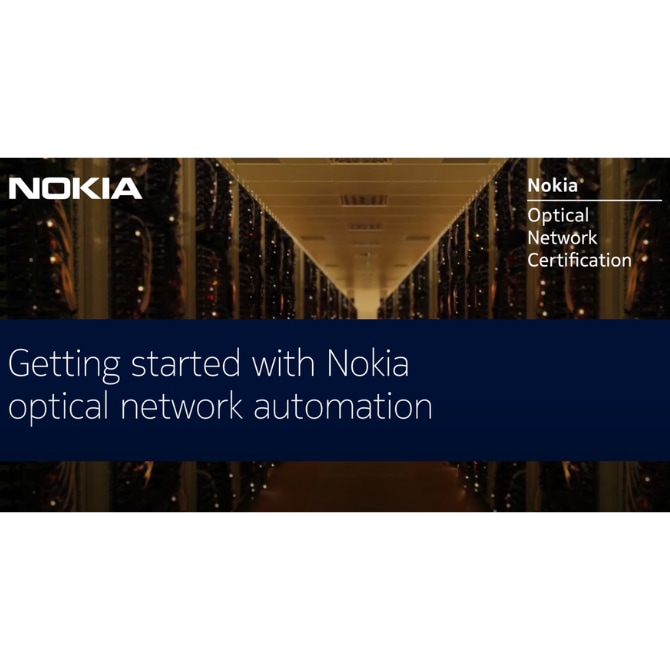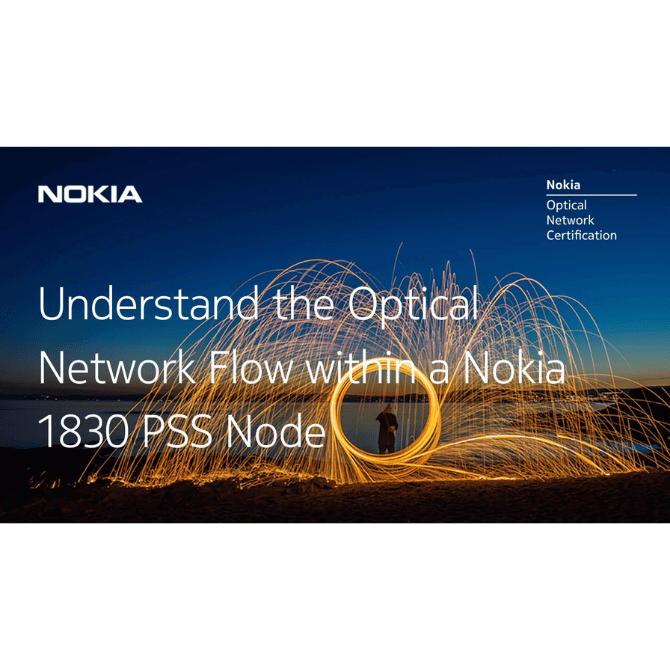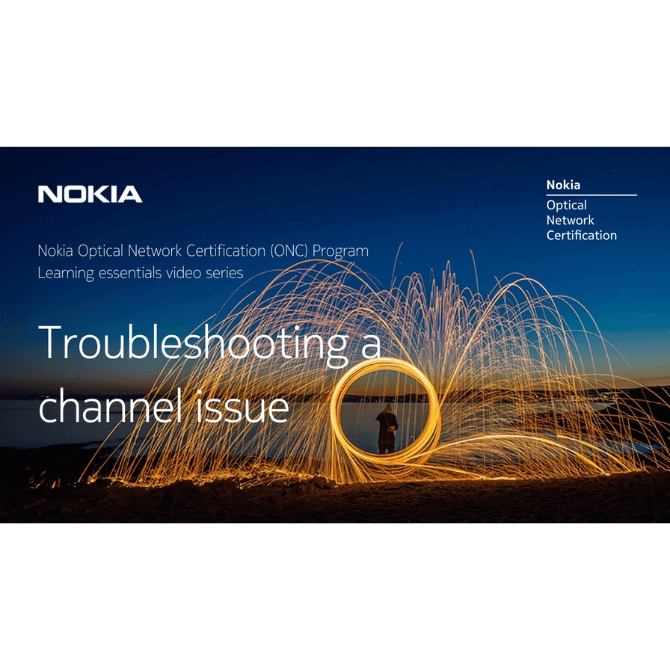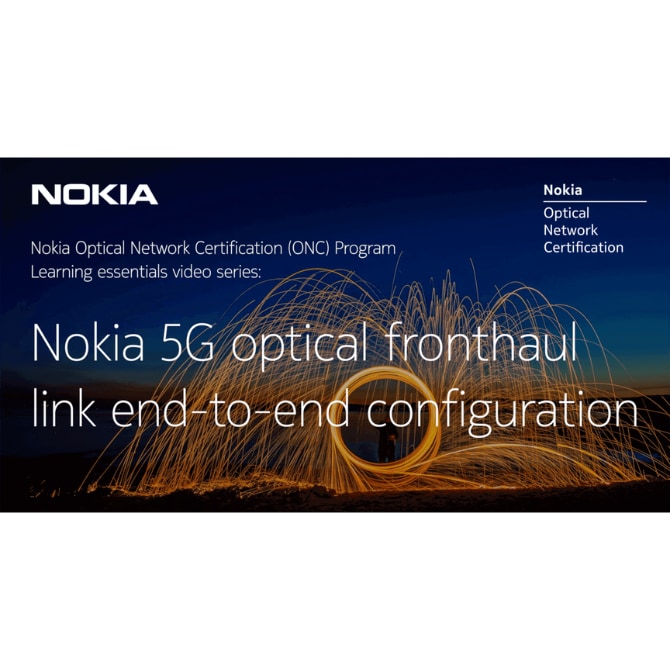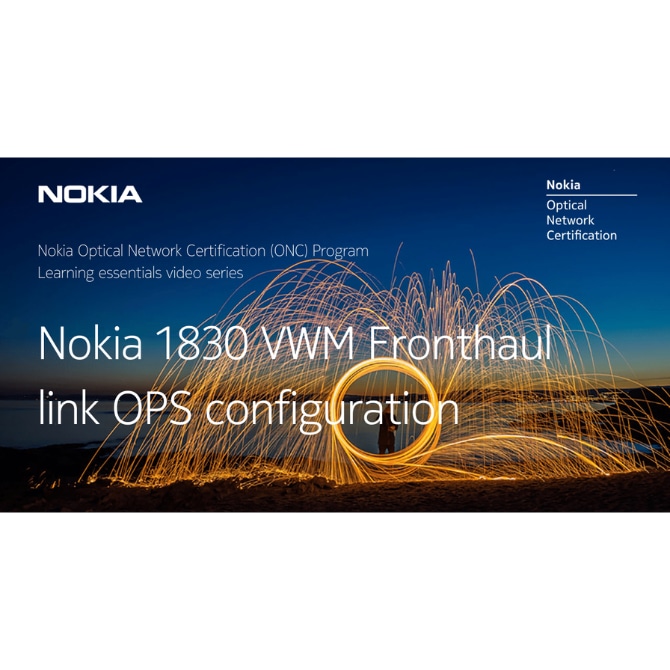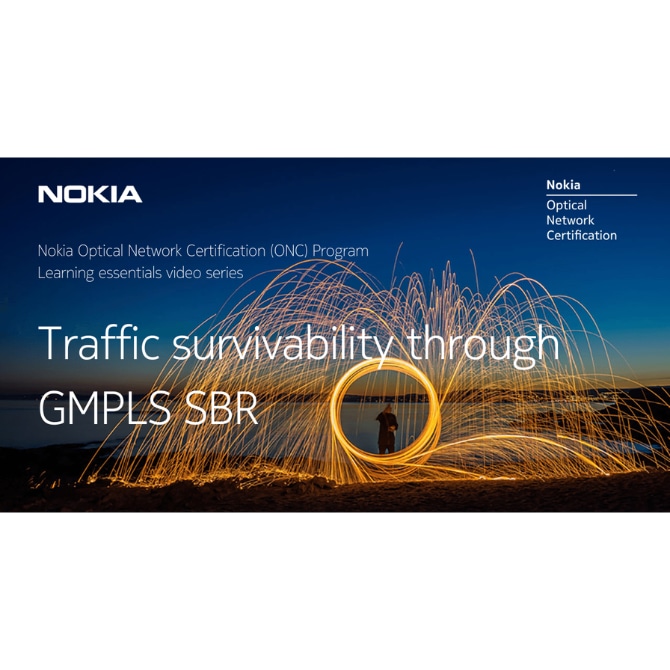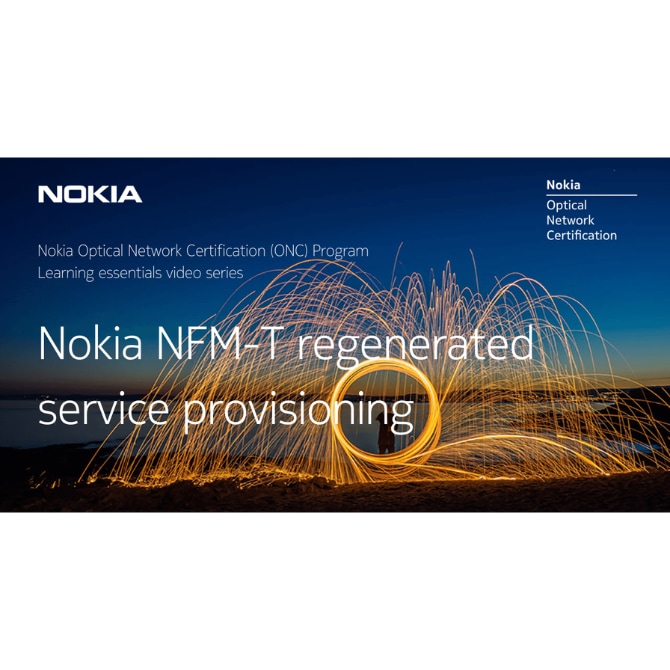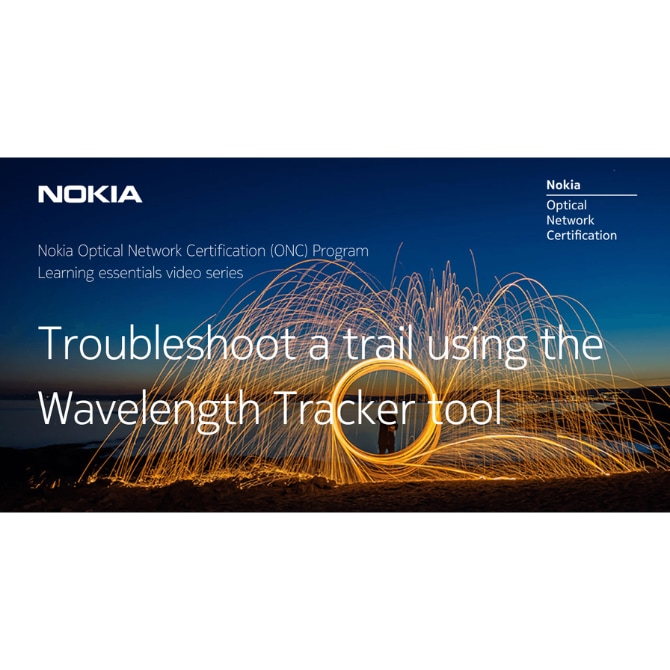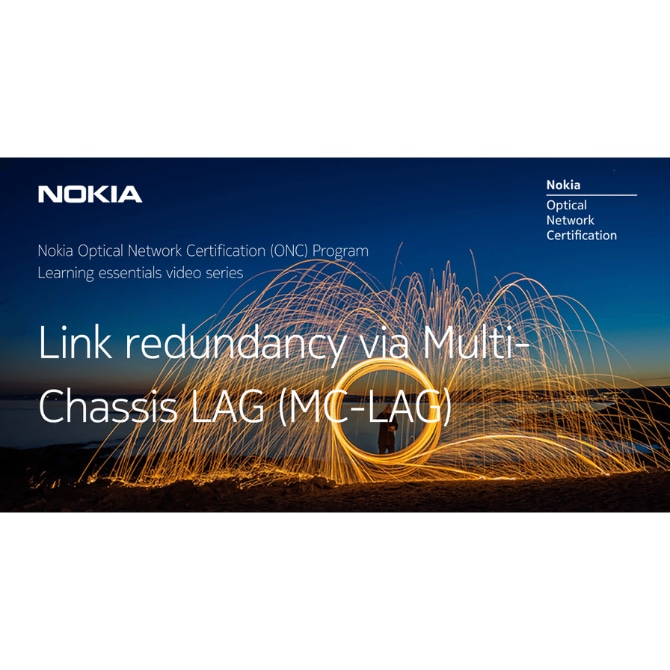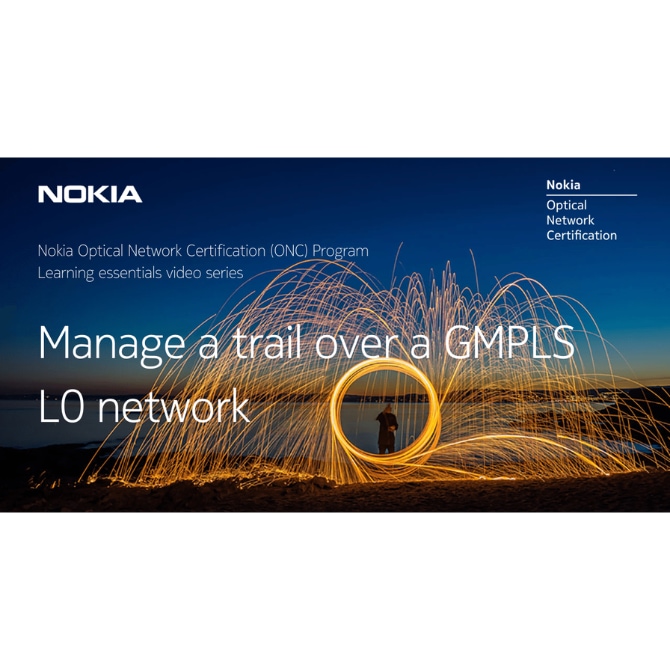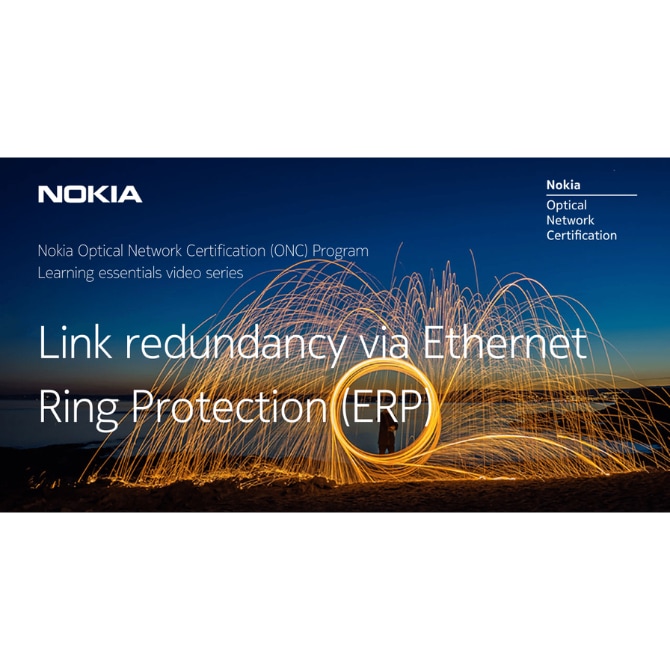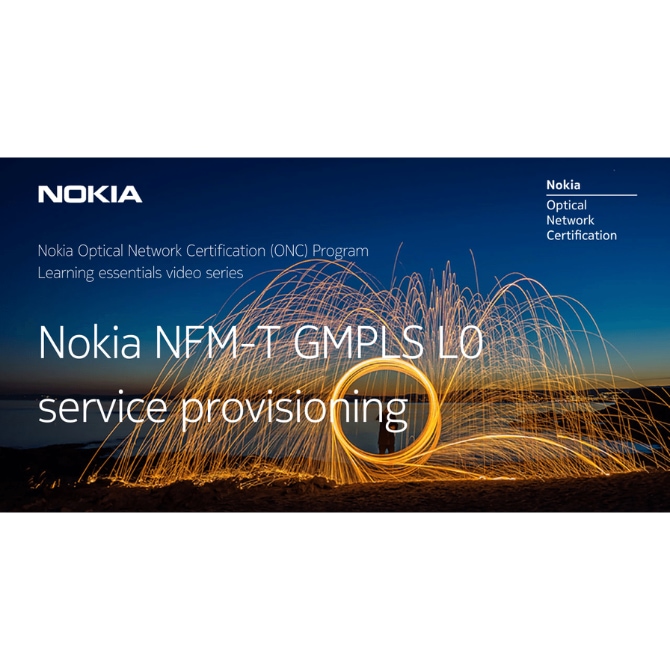Self-paced learning
Self-study course materials, certification bundles, and video tutorials
Learn on your time at your own pace
Access the same course materials from our instructor-led training and add My Nokia Optical Labs to complete the same labs from the course. Whether you are preparing for written exams, lab exams, or simply interested in developing your skills - our self-paced materials are a flexible and cost-effective choice, especially when purchasing a certification bundle.
We also have a free library of video tutorials below from our Optical Networking Learning Essentials video series covering important topics from many of our courses.

eLearning
| Course description | Course number | Duration | Price (€) | Registration |
| Nokia Optical Networking Fundamentals | ER00834 | 4 hours | €400 | Register now |
| Introduction to Nokia Optical Network Automation | OP00124 | 4 hours | €400 | Register now |
Self-study course materials
Self-study certification bundles
| Course description | Course number | Duration | Price (€) | Registration |
| Nokia Optical Networking Fundamentals | ER00834 | 4 hours | €400 | Register now |
| Introduction to Nokia Optical Network Automation | OP00124 | 4 hours | €400 | Register now |
Get access to the digital course materials for self-study and make your self-study more impactful by purchasing My Nokia Optical Lab time to complete the labs from the lab guides included in the course materials below.
Course materials are secured using Digital Rights Management (DRM) and include:
Content |
Access |
Features |
|
|
|
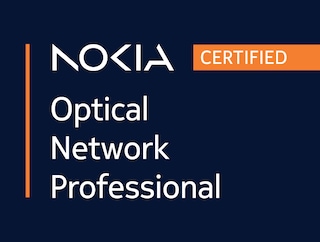
Nokia Certified Optical Network Professional Certification Bundle
What you get:
-
1 set of self-study course materials
-
15-hour access to My Nokia Optical Lab to complete the labs (Note: Hands-on experience is not required to prepare for the exam)
-
1 Pearson VUE exam voucher
€500 (savings of 33%)
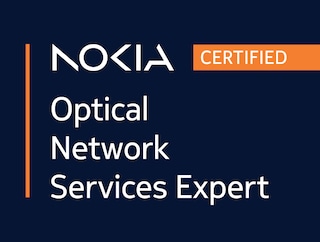
Nokia Certified Optical Network Services Expert Bundle
What you get:
-
4 sets of self-study course materials
-
4 Pearson VUE exam vouchers
-
1 lab exam voucher
-
16 x 3 (48 hours) sessions of My Nokia Optical Lab time
€2,500 (savings of 33%)

Nokia Certified Optical Network Design Expert Bundle
What you get:
-
2 sets of self-study course materials
-
2 Pearson VUE exam vouchers
-
1 lab exam voucher
-
12 x 3 (36 hours) sessions of My Nokia Optical Lab time
€1,500 (savings of 31%)
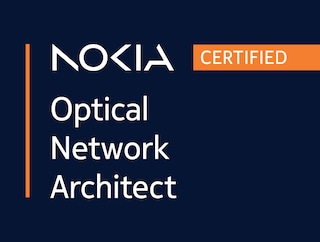
Nokia Certified Optical Network Architect Bundle
What you get:
-
4 sets of self-study course materials
-
4 Pearson VUE exam vouchers
-
1 lab exam
-
16 x 3 (48 hours) sessions of My Nokia Optical Lab time
€2,700 (savings of 33%)
ONC learning essentials video series
The ONC Learning Essentials video series is a collection of short, highly informative, video training sessions focused on subjects relevant to courses, exams, and certifications in the ONC program.
